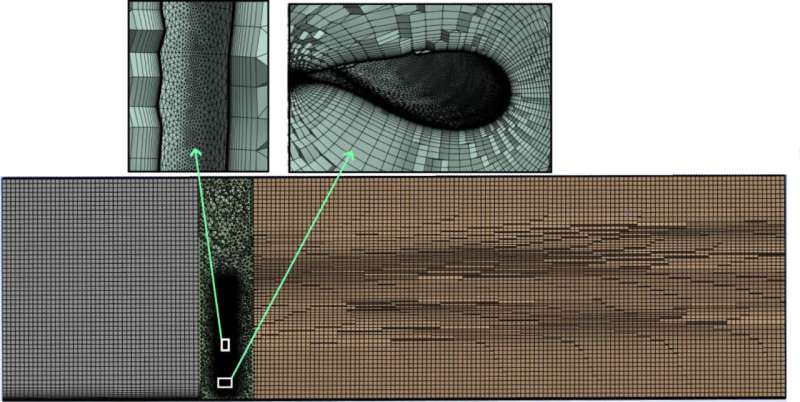This article has been reviewed according to Science X's editorial process and policies. Editors have highlighted the following attributes while ensuring the content's credibility:
fact-checked
trusted source
proofread
World's heaviest soaring bird inspires wind power design

Mechanical engineers at the University of Alberta have teamed up with a renewable energy company to design and test wind turbines based on the wings of the world's heaviest soaring bird: the Andean condor, which is capable of flying up to 240 kilometers in a single day without flapping its wings.
When placed at the tip of a turbine blade, the c-shaped "winglet" inspired by the condor reduces drag, potentially increasing the turbine's efficiency by up to 10% in optimal conditions, according to a study published in the journal Energy.
The wings of soaring birds have also been adapted for use in commercial and military aircraft around the world to increase their lift, says co-author Brian Fleck, a professor of mechanical engineering and expert in fluid dynamics.
"We used to have airplanes with straight wings," says Fleck. "Now we see them with the tips curled up, and there's a reason for that."
The curl reduces a vortex of air flowing off the tip of the wing due to differences in air pressure on its top and bottom, he says, which is essentially wasted energy. The winglet is what allows the 15-kilogram condor to stay aloft for so long, expending minimal energy.
Working with a company called Biome Renewables, which came up with the innovative design, Fleck and his team simulated the rotation of the turbine blades using computational fluid dynamics, with promising results.
"This will make a difference," he says. "It could make some of our wind farms more economically viable on days when it's not really windy—a little bit more juice for the same amount of real estate."
Intended as a retrofit to existing turbines, the winglet could cut the price of electricity for Albertans while reducing the consumption of fossil fuels.
The turbine wingtips are one example of turning to the natural world for solutions to design problems—a growing field called biomimicry.
"It's amazing how nature has evolved through millennia to come up with such optimal designs," says Khashayar RahnamayBahambary, a graduate research assistant and co-author on the study. "It leaves a lot of room for inspiration."
More information: Khashayar RahnamayBahambary et al, A numerical study of bio-inspired wingtip modifications of modern wind turbines, Energy (2024). DOI: 10.1016/j.energy.2024.130561

















